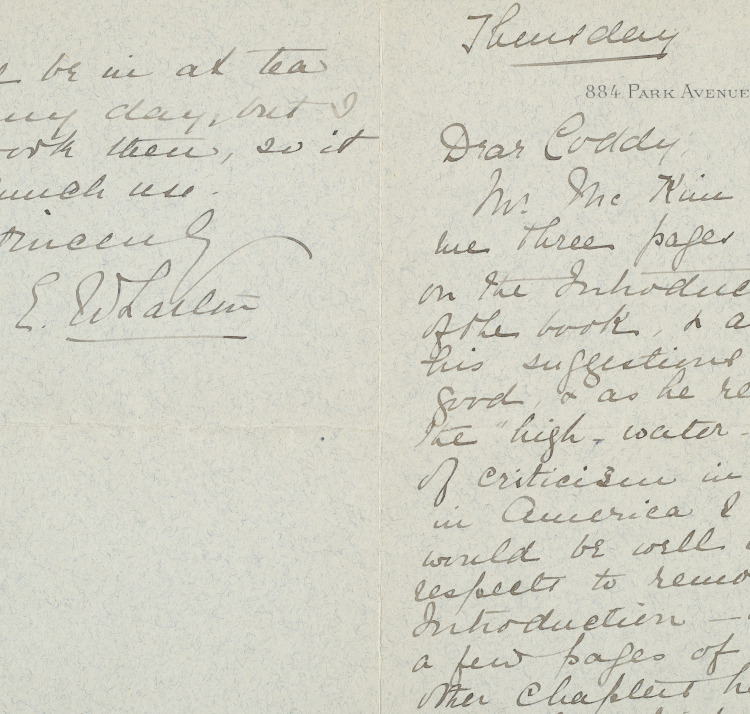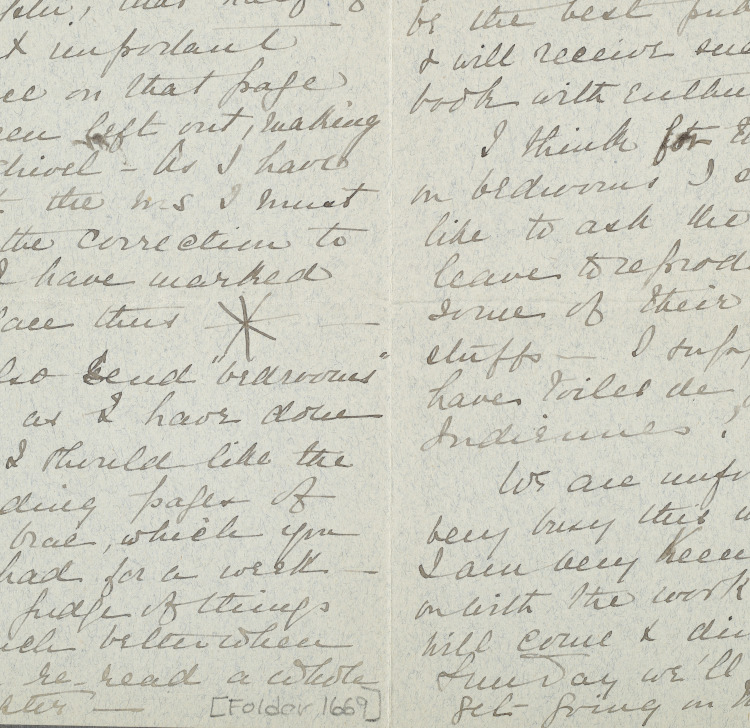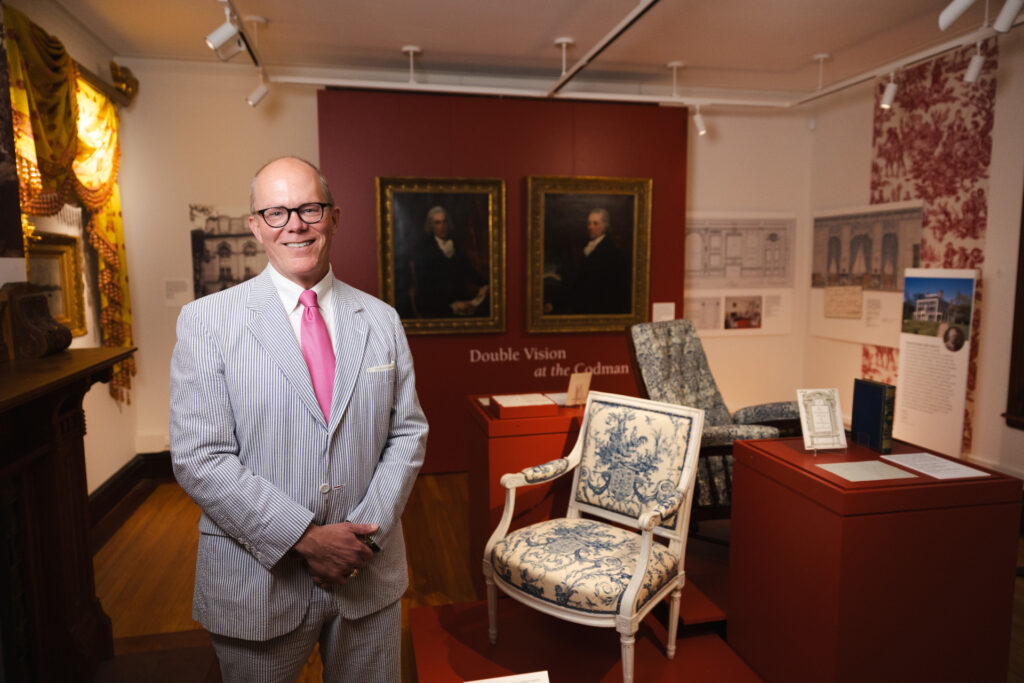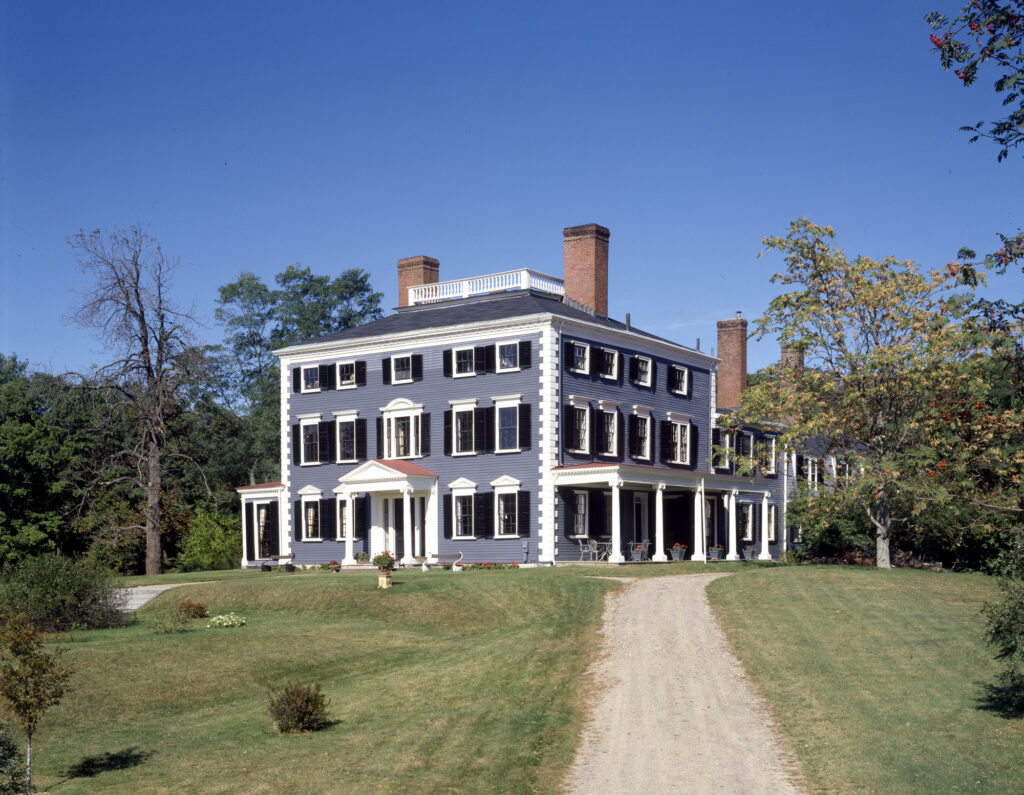 Eustis Estate
Eustis Estate

Ogden Codman's Correspondence
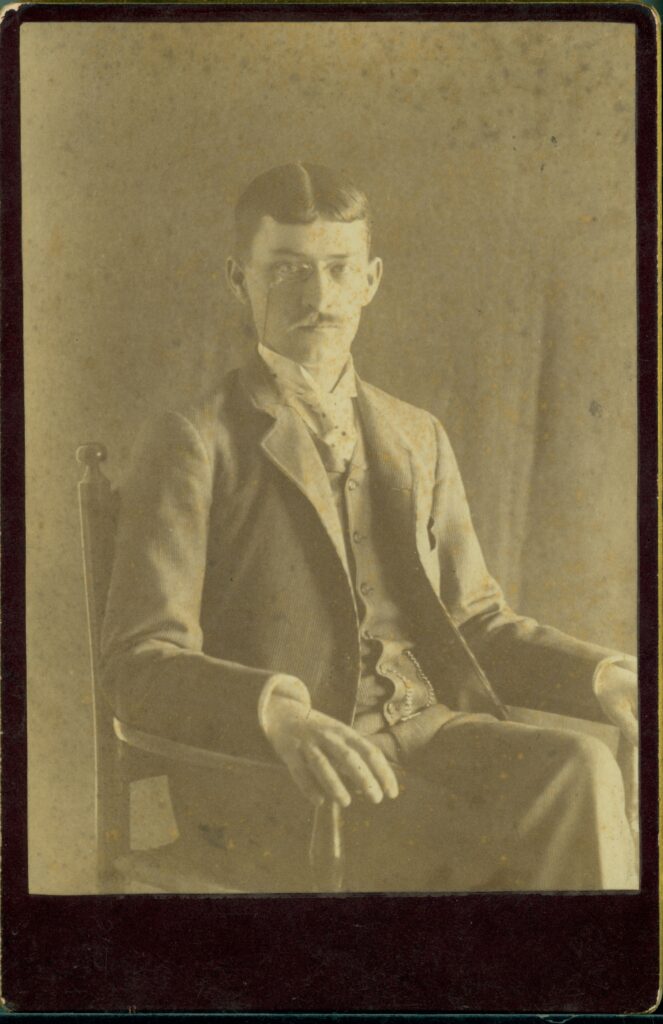
Thomas Newbold Codman (1868-1963) Bar Harbor, Maine, 1887
Albumen print
Codman Family Papers, Historic New England
Codman’s personal correspondence reveals his scrutinizing eye. In this 1883 letter to his mother he proposes specific pieces for the family home, adding, “papa will scorn my furniture.” His 1894 letter to friend and fellow architect Arthur Little (1852-1925) minutely catalogues his new wardrobe. Ending his letter “you would hardly recognize me I look so smart,” Codman provides a sketch of his stylish mustache — also captured in this 1887 portrait taken by his brother Tom. In later letters to his siblings, dating from the 1920s onward, Codman demands “kodaks” of the Codman Estate’s interiors to ensure the proper execution of his designs.
Codman met his distant cousin, the future novelist Edith Wharton (1862-1937), at Newport, Rhode Island, in 1891. Calling her “the cleverest and best friend I have ever made,” he affectionately referred to her as “Puss”; in turn, Wharton addressed the young architect as “Coddy.” In 1897 they co-authored the enormously successful treatise The Decoration o/ Houses, a project Wharton references in this letter addressed to “Coddy.” Advocating a trickle-down theory of style, their book pronounced: “When the rich man demands good architecture, his neighbors will get it too.”
Read full transcripts and zoom into Ogden’s letters below.
Ogden Codman Jr. to Sarah Bradlee Codman
December 13, 1883Transcription of a letter from Ogden Codman Jr. to Sarah Bradlee Codman dated December 13, 1883. Codman often dispensed with punctuation, as reflected here. The quotation used in exhibition label is in BOLD.
[PAGE 1]
96 Charles St Dec 13 evg
Dear Mama –
You ask me in your letter / how I like my room.
I like it so little that I have / taken another and am moving / in.
I am going to No.15 Charles St.
The reason I have not told you / of my moving was that I was / not sure that I should be able to / do so, and I did not want you / or any one to know how discontented / I was unless there was a reason- / able chance of my being / able to change.
When I first came here / to 96 I understood I was to / have my breakfast in a little / room [illeg.] the front door / at a reasonable price.
Ogden Codman Jr. to Arthur Little
April 10, 1894Transcription of a letter from Ogden Codman Jr. to Artur Little dated April 10, 1894. Codman often dispensed with punctuation, as reflected here. The quotation used in exhibition label is in BOLD.
[PAGE 1]
Tuesday April 10th 1894.
- RUE DE PONTHIEU
Dear Arthur: I have enjoyed / your letters so much / I am just reading the / last one – about the
[illeg.] / I will wait till I come / home for them!
How funny about Archie / Coolidge & Corinna I wonder / if they will be engaged / again I
wonder if you mean Phil Lydig – / who I consider rather / handsome I think it / must have been
fun at / Farleys that ev’g as / the man [illeg.] by Lil Cod must have been too
Letter from Edith Wharton to Ogden Codman Jr.
c. 1896Transcription of a c. 1896 letter from Edith Wharton to Ogden Codman Jr. The reference used in exhibition label is in BOLD.
[PAGE 1]
Thursday [1896?]
884 PARK AVENUE
Dear Coddy,
Mr. McKim has sent / me three pages of notes / on the Introductory Chapter / of the book, & as some of his suggestions are very / good, & as he represents / the “high-water-mark” / of criticism in that line / in America I think it / would be well in some / respects to remodel the / Introduction – or rather, / a few pages of it – The other chapters he entirely / agrees to, which is nice.
I send you a page of / the Introduction to be / re-typed, as I found, to
[PAGE 2]
notes –
I shall be in at tea / time any day, but I / can’t work then, so it / isn’t much use.
Yrs sincerely
E. Wharton
Curator's View
The Codman BrothersTake a Virtual Tour of the Codman Estate
Click the PLAY button to begin your visit. Start exploring by clicking in the direction you want to go or skip around by clicking on the circles on the ground. To look around a space, simply click, hold, and drag in any direction.
Navigate quickly between rooms and floors using the icons found in the lower left corner.
